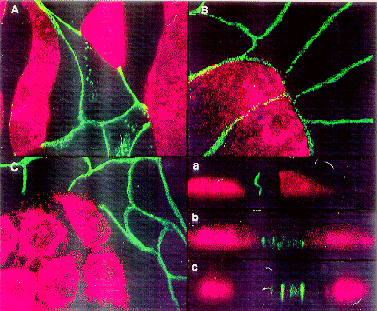
Full text loading...
The tight junction (TJ) is not randomly located on the cell membrane, but occupies a precise position at the outermost edge of the intercellular space and, therefore, is itself considered a polarized structure. This article reviews the most common experimental approaches for studying this relationship. We then discuss three main topics. (a) The mechanisms of polarization that operate regardless of the presence of TJs: We explore a variety of polarization mechanisms that operate at stages of the cell cycle in which TJs may be already established. (b) TJs and polarity as partners in highly dynamic processes: Polarity and TJs are steady state situations that may be drastically changed by a variety of signaling events. (c) Polarized distribution of membrane molecules that depend on TJs: This refers to molecules (mainly lipids) whose polarized distribution, although not the direct result of TJs, depends on these structures to maintain such distribution.

Article metrics loading...

Full text loading...


Data & Media loading...
Supplemental Material
Figure 4. The relationship between TJs and polarity: E-cadherin participates in polarization and formation of TJs. This is illustrated in confluent monolayers corresponding to monolayers of mixed MDCK (not stained) and MA104 cells stained before mixing
with (5-(and6)-(((4-chloromethyl)benzoyl)amino)tetramethyl rodamine) (red), as seen in upper (A,B,C) and lateral (a,b,c) views. Green staining corresponds to E-cadherin (A,a), ZO-1 (B,b), and Na+,K+-ATPase (C,c) of MDCK cells. Notice that whereas E-cadherin and Na+,K+-ATPase expression requires neighboring cells to be of the same type (i.e. MDCK-MDCK), ZO-1 is expressed between MDCK-MDCK, MDCK-Ma104 and Ma104-Ma104. The fact that ZO-1 depends on the activation of E-cadherin, but can be expressed even in regions of MDCK cells where E-cadherin is absent, indicates that this molecule is not restricted to holding two neighboring cells together but can trigger a cascade of reactions (described by Balda et al 1991) that influences the distribution of ZO-1. On the contrary, expression of Na+,K+-ATPase, which is also triggered by Ca-activated cell-cell contacts (24), requires both neighboring cells to be of the same type.
